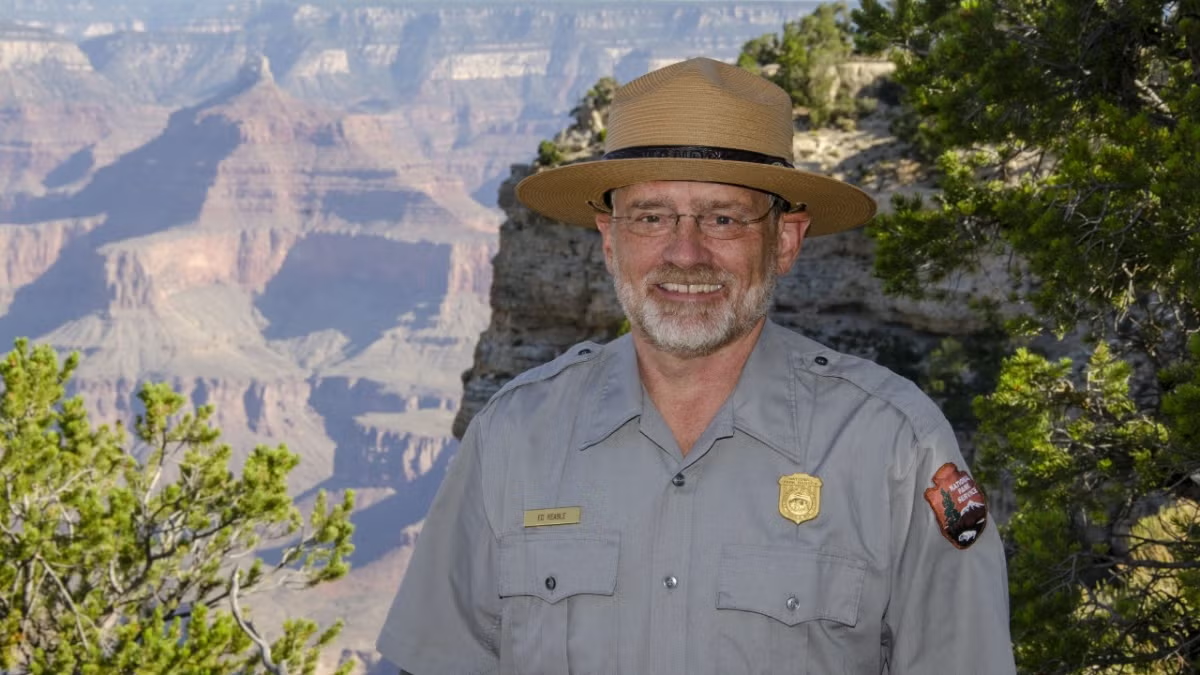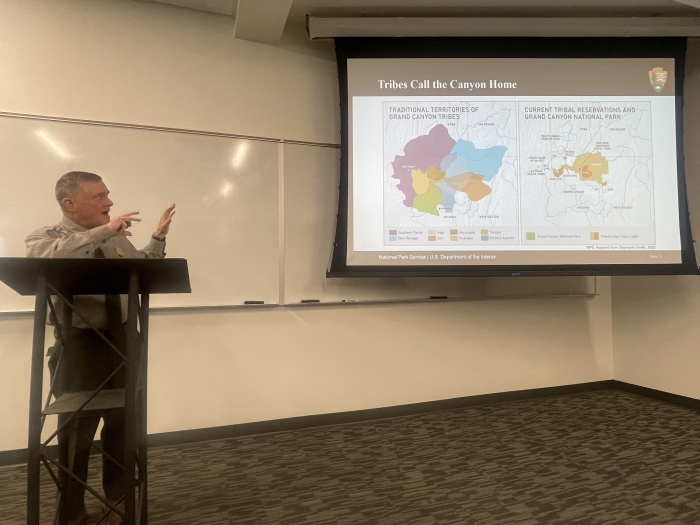Grand Canyon National Park superintendent visits ASU, shares about efforts to welcome Indigenous voices back into the park

Ed Keable, superintendent of Grand Canyon National Park. Courtesy photo
There are 11 tribes who have historic connections to the land and resources in the Grand Canyon National Park. Sadly, when the park was created, many were forced from those lands, sometimes at gunpoint.
“It’s important to us as we’re welcoming Indigenous people back to their home that that’s part of the history of the Grand Canyon we’re not going to shy away from,” said Grand Canyon National Park Superintendent Ed Keable during a recent visit to Arizona State University, where he spoke to students of the School of Historical, Philosophical and Religious Studies.
Today, Keable shared, the park is working to correct that and is giving each tribe a say in how they are welcomed back, with officials going into meetings with tribal members “ready to listen rather than speak, do rather than tell.”
Keable, appointed to his position as superintendent of the park in 2020, said that his time there has shown him that there is space to manage the park as a national park, as well as the homeland of the associated tribes. He outlined three areas of the park’s work with tribal partners: cultural connection, partnerships and building communities.
Keable's lecture featured clips from “We are Grand Canyon,” the park’s welcome video featuring interpretation from Indigenous people. This, he said, was created in partnership with the Grand Canyon Conservancy, a strong partner for the park’s Indigenous affairs program.
This is one of many forms of media the park is adding to its website featuring Indigenous voices and languages, Keable said, also referring to episodes of the "Minute Out In It" series, "Grand Canyon Speaks" podcast and "Behind the Scenery" podcast.
“The Havasupai, this is our land,” said Ophelia, a member of the Havasupai Tribe, in one video. “No past tense allowed. I think people will come to find that the park service is willing to recognize that now, and that we are trying our best to work together because we can’t take any steps back.”
When the Havasupai were displaced from the canyon, the area they inhabited was named “Indian Gardens” for around 100 years. In 2022, this name was changed to “Havasupai Gardens” to honor the once thriving community forced from the area, and Havasupai people were given a building to stay or just “be” in their ancestral home. A wayside exhibit explaining the significance of the area was also added to the gardens. Keable said the park is working with representatives from the associated tribes to create accurate and culturally appropriate signage in areas of significance to each tribe, written in both English and the specific tribe’s language.
The park and its associated tribes are also creating more opportunities for their young people to spend time in the canyon’s river and backcountry, as many Indigenous youth haven’t formed a connection with the land that holds such importance to their people. Additionally, Keable is working to gain direct hiring authority for Indigenous people who qualify for open positions, and introducing more opportunities for Indigenous vendors around the park.
While Keable emphasizes celebrating the park’s successes, he recognizes that there are also limits to what he is authorized to do. Many tribes have cultural and spiritual practices that include taking plants or other material from the park, an action that is barred by the park service. He also said some tribes don’t have the resources to engage with the park, but that the park is working with the conservancy to provide funding to change that.
“There are limitations,” Keable said, “but we are trying to find pathways through those limitations. And we’re doing that together.”
More Arts, humanities and education

Upcoming exhibition brings experimental art and more to the West Valley campus
Ask Tra Bouscaren how he got into art and his answer is simple.“Art saved my life when I was 19,” he says. “I was in a dark place and art showed me the way out.”Bouscaren is an …

ASU professor, alum named Yamaha '40 Under 40' outstanding music educators
A music career conference that connects college students with such industry leaders as Timbaland. A K–12 program that incorporates technology into music so that students are using digital tools to…

ASU's Poitier Film School to host master classes, screening series with visionary filmmakers
Rodrigo Reyes, the acclaimed Mexican American filmmaker and Guggenheim Fellow whose 2022 documentary “Sansón and Me” won the Best Film Award at Sheffield DocFest, has built his career with films that…


